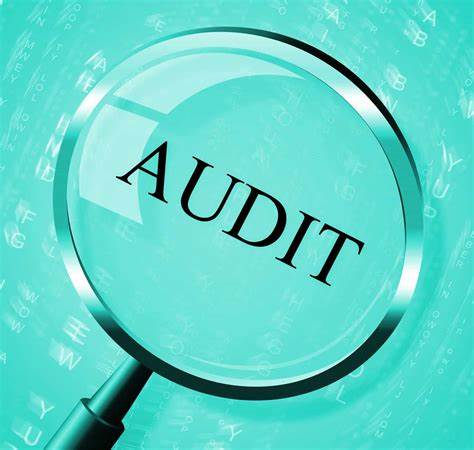Internal auditing is a crucial component of the pharmaceutical industry that is responsible for ensuring compliance with regulations, maintaining product quality, and managing risks associated with the production and distribution of pharmaceutical products. The significance of internal auditing in this sector cannot be overstated, and it is imperative to adhere to regulatory expectations.
Significance
Compliance Assurance:
Internal audits play a crucial role in the pharmaceutical industry by ensuring that companies comply with various regulatory requirements, such as Good Manufacturing Practices (GMP), Good Laboratory Practices (GLP), and Good Clinical Practices (GCP). Through regular auditing of processes and systems, companies can identify and resolve non-compliance issues in a timely manner, preventing them from escalating and potentially facing regulatory sanctions.
Quality Management:
Quality is a crucial aspect of the pharmaceutical industry, and it is taken very seriously. To ensure the consistency and reliability of products, internal audits are conducted to assess and improve the quality management system. These audits are essential as they help identify areas where quality standards may be lacking and where improvements can be made to enhance the overall quality of pharmaceutical products.
Risk Management:
Conducting internal audits to assess and mitigate risks associated with the production, distribution, and storage of pharmaceuticals is a crucial step towards ensuring that these processes are carried out smoothly and successfully. By identifying potential vulnerabilities in the supply chain, manufacturing processes, and data integrity, the audit process enables effective risk management. This, in turn, helps prevent issues such as contamination, counterfeiting, and supply chain disruptions. It is therefore imperative that internal audits are conducted regularly to ensure that pharmaceutical production, distribution, and storage are carried out in a safe and reliable manner.
Continuous Improvement:
The process of conducting internal audits in pharmaceutical companies can significantly contribute to the continuous improvement of their processes and systems. By providing feedback and implementing corrective actions, organizations can enhance their efficiency, minimize waste, and optimize their resource utilization.
Data Integrity:
Ensuring the integrity of data is a critical aspect of the pharmaceutical industry. Internal audits place a strong emphasis on data management processes in order to prevent data manipulation, fraud, or inaccuracies. The consequences of compromised data can be severe and pose a serious threat to the safety and efficacy of pharmaceutical products. As such, maintaining strict standards for data management is of utmost importance.
Regulatory Expectations
GMP Compliance:
Pharmaceutical companies are expected to adhere to Good Manufacturing Practice (GMP) regulations by regulatory bodies such as the U.S. Food and Drug Administration (FDA) and the European Medicines Agency (EMA). It is imperative that internal audits are conducted to ensure that manufacturing and quality control processes comply with these standards.
Documentation and Record-Keeping:
In order to comply with regulatory requirements, it is necessary to maintain meticulous documentation and record-keeping standards. To ensure that these standards are met, internal audits are conducted to examine the completeness and accuracy of documentation. This process guarantees that all practices adhere to regulatory expectations and maintains accountability.
Training and Competence:
The purpose of audits is to assess the efficacy of the training programs that are implemented, ensuring that all personnel are adequately trained and competent in their respective roles. Regulatory bodies hold companies to the standard of maintaining a trained workforce in order to ensure that product quality and safety are maintained at all times.
Supply Chain Oversight:
As global supply chains continue to expand, regulatory expectations are becoming increasingly stringent. It is imperative for organizations to implement robust oversight of their suppliers and distributors. To ensure the integrity of raw materials and finished products, internal audits are conducted to evaluate the effectiveness of the supply chain management system. This practice is essential for building trust with customers and stakeholders alike.
Data Security and IT Systems:
Technology has become a pivotal component of the pharmaceutical industry, and regulatory expectations have evolved to include the implementation of secure data management and IT systems. In order to ensure compliance with these expectations, internal audits are routinely conducted to evaluate data integrity, cybersecurity measures, and the reliability of electronic systems.
Internal auditing is an indispensable element of the pharmaceutical industry that ensures compliance, maintains the quality of products, manages risks, and meets the stringent expectations of regulatory authorities. It plays a pivotal role in the pharmaceutical quality management system, contributing to the overall safety and efficacy of pharmaceutical products. Therefore, it is imperative for pharmaceutical companies to prioritize internal auditing to ensure that their products meet the highest standards of quality and safety.
Contact Us:
At GxP Cellators, we take pride in our commitment to ensuring the success of our clients by providing unparalleled internal auditing strategy services during site readiness programs. Our team of highly skilled experts is available 24/7 to evaluate your routine operations, conduct thorough GAP assessments, and recommend and implement any required corrective and preventive actions (CAPAs) to ensure that your manufacturing operations comply with regulatory expectations.
At GxP Cellators, we understand the significance of adhering to regulatory expectations and the importance of ensuring that your products meet the highest standards of quality and safety. That is why we provide top-of-the-line services to help you achieve your compliance goals.
For further information, please feel free to email us at info@gxpcellators.com.











